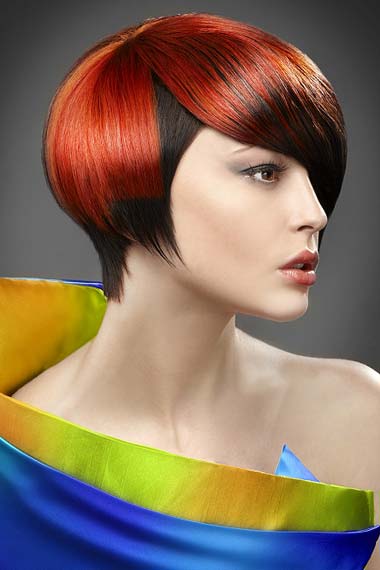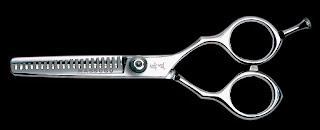I've decided to do my write up early this week- just in case something else happens right after I hit "publish."
After European banks started falling last weekend, everything else started falling apart when everyone realized that this credit crisis was not limited to the US. On Monday, Wachovia made a deal with Citigroup with the help of the FDIC to buy their bank deposit arm for $2.16 billion.
On Tuesday, Bailout plan #1 was rejected by Congress, and the Dow Jones fell over 700 points, hitting a record low since the October Market Crash in 1987. It was actually quite exciting- it is definitely not everyday that we see history in the making! This also served as a good shocker for congress members who voted against the plan. Many of them were worried about the "unpopularity" of Bailout plan #1 with their voters, since many people viewed this plan as a bailout plan for Wall Street (many nay-saying congress members are facing re-election this November). What did they think was going to happen if the bailout plan doesn't go through?
With this record crash in the market, people finally realized that this was a bailout plan for the people. This is not a time to place blame and punish those who did wrong (I mean, if we're really going to place blame, I think the people who borrowed the loans knowing they cannot repay them is equally to blame as the banks who made the loans to begin with). This is a time to take action before the effects of the credit crunch affects the rest of the economy. It would be irresponsible for the government to do nothing. Call me selfish, but right now, as a worker and member of the society, I'm more worried about the adverse effects this will have on my job (the just reported the biggest job lose in 5.5 years!), my 401K, my ability to get a loan (not that I'm planning to buy a car/house any time soon, but IF), and just my way of life in general. Even if you don't invest, have a 401K or have/need a loan right now, businesses you're linked to may close down because they are unable to get a short term loan to fund their business operations or their prices would go up because it will be more expensive for these businesses to get a loan and operate.
Good thing voters and congress members finally realized this on Friday, and voted 263 vs 171 for Bailout plan #2, which was created in record time. It is basically the same as Bailout plan #1, except with an extra $150 billion put aside for random tax packages (way to take the "load" off our future generations). They ramped up the FDIC insurance limit to $250,000, put more oversight on the execution of the $700 billion, gave the SEC authority to suspend the "mark to market" accounting standard (so firms don't have to mark down their assets just because the market is crazy these days) and a gazillion little tax breaks benefiting the environmental friendly, middle class, natural disaster hit states, homeowners,educators and businesses. Basically something for everyone- even people with mental health needs and the makers of "certain wooden arrows designed for use by children" (I don't even know what that is). It sounds like basically the same plan to me, except policy makers decided to take this opportunity for "quick action" to randomly put in policies they've been meaning and wanting to pass, to make it sound like a better plan. Oh well, I guess it works out for everyone in the end.
Unfortunately, now even the bailout plan isn't good enough to restore confidence and the market continued to fall after Bailout plan #2 passed on Friday. It's going to take a while for the bailout to take effect. At least there's hope. I'm thinking it is not a good time for Mr. Schwarzenegger to be asking for a $7 billion short term loan to weather CA out until tax comes in, in spring.
On the other hand, while the current economical situation is being compared to scary sounding things like the economic Pearl Harbor, the Great Depression and at the edge of the abyss, Mr. Buffet went on a shopping spree. After buying some of Constellation Energy for $4.75 billion and Goldman Sachs for $5 billion in September, this week, he also bought 10% in Chinese battery and automotive maker, BYD, for $230 million and more of GE for $3 billion. Even though this may sound shocking in this market, Buffet is actually a very sensible shopper. While fashion trends go in and out, the classics will never go out of style. Goldman Sachs and GE definitely qualify as classics, one being THE top bank on the street and the other being literally the backbone of the American economy, dabbling in a bit of everything. One is Hermes and the other is Bergdorfs. And the best part is that he's buying all these quality investments at a BARGAIN price. Another good shopping philosophy is to invest in emerging talents before they're famous and mainstream. BYD with its rechargeable green batteries and electric cars is definitely part of an emerging market. I'm not sure in which category Constellation Energy fits in, perhaps a bit of both? Either way, Buffet is a very sensible fellow shopper. As he said, "I like spending...The cheaper things get, the better I like it. This is a good period for us..go ahead." I can definitely relate to that. If only I knew the market classics as well as I know the fashion classics and had the capital to act on it. Another Buffet philosophy that I agree with, "there's no way a smart person can go broke except through borrowed money. All borrowed money does is help you get it a little faster, but (it also will) help you get poorer a whole lot faster." Credit card debts are definitely not pretty.
Buffet also made a deal with Wachovia this week, through Wells Fargo (which he owns a lot of). Yes, the same Wachovia that I said earlier in this post, that had just made a deal with Citi on Monday. Wells Fargo upended Citi's offer and offered to buy (the whole of) Wachovia for $15.1 billion without government help. Previous agreements and honor of word aside, this is definitely a better deal for Wachovia and the government since they don't need to help anymore. Wells Fargo is actually one of the few banks that is weathering this market out quite well, having had less exposure to bad debt (they have a much stricter credit requirement- as they should!). Citi, of course, is miffed that their government sponsored bargain deal has been thwarted and are thinking of suing them. Do I see a banking bitch fight coming? Probably not, the government would probably do something. This market doesn't need anymore drama... but it would've been fun to watch :P. It's no wonder that CNBC reputedly has had the best ratings these last two weeks since earlier this decade!
 Besides Galliano, my two other favourite crazy make-up looks are from Dior (left) and the Lacroix haute couture (right) show. Both redefines the upper and lower part of the eyes making their eyes look HUGE. They are in essence however, the opposite of each other. While Dior uses a sharp white base, Lacroix uses a smokey black base. Either way, I'm loving both of them. Go for the Dior look if you want to look feline and the Lacroix look for something a bit darker.
Besides Galliano, my two other favourite crazy make-up looks are from Dior (left) and the Lacroix haute couture (right) show. Both redefines the upper and lower part of the eyes making their eyes look HUGE. They are in essence however, the opposite of each other. While Dior uses a sharp white base, Lacroix uses a smokey black base. Either way, I'm loving both of them. Go for the Dior look if you want to look feline and the Lacroix look for something a bit darker.  A bit more subtly, we have the smokey eyes of the Chanel haute couture (left) and the Balenciaga (right) show. Just go heavy with the eye liner and the smudging. If you do have a costume, these would be more subtle looks for you. You don't want to take away too much from the outfit now do you?
A bit more subtly, we have the smokey eyes of the Chanel haute couture (left) and the Balenciaga (right) show. Just go heavy with the eye liner and the smudging. If you do have a costume, these would be more subtle looks for you. You don't want to take away too much from the outfit now do you?





















.jpg)

































